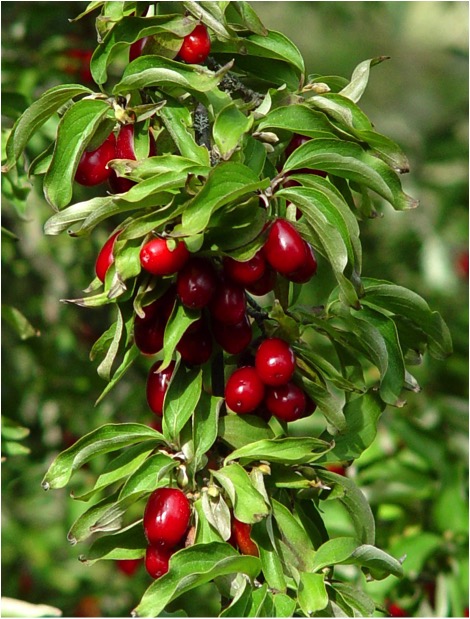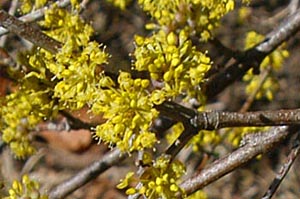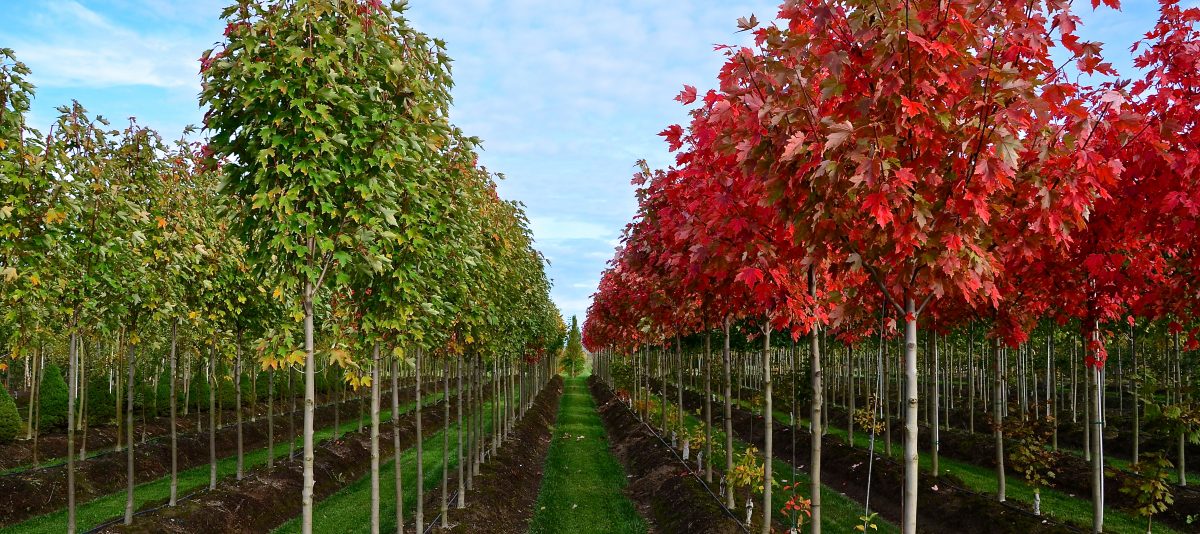Cornelian Cherry Dogwood
Cornus mas
 Well, is it a cherry tree or a dogwood tree? Technically, the Cornelian Cherry Dogwood is a dogwood, but with cherry like fruit. Almost better known by its scientific name, Cornus Mas is a small tree or a large shrub if not pruned like a tree, but either way this dogwood is underused with lots of hidden talents.
Well, is it a cherry tree or a dogwood tree? Technically, the Cornelian Cherry Dogwood is a dogwood, but with cherry like fruit. Almost better known by its scientific name, Cornus Mas is a small tree or a large shrub if not pruned like a tree, but either way this dogwood is underused with lots of hidden talents.
First, this is a slow growing tough tree. It tolerates a wide range of soil conditions including pH, more than probably any other dogwood. The limbs are flexible which to me is always good not only from a shipping standpoint but also is forgiving when kids try to hang on limbs or tall traffic and maintenance equipment brushes past it.
Note that the Cornus Mas is available in multi-stem or tree form. The tree wants to be a shrub so it is man against nature to keep them straight and balanced during their training, but it can be done. As a tree, the crown attributes are accented. In multi-stem, an irregular and interesting form can develop with bark and its character improving with age.
A surprise to many who are unaware, are the bright yellow flowers that emerge around here as early as January and can hang on for 2 months. The very dogwood like leaves, appear a bit late, but are followed later in the year by the infamous cherry fruit, depending on your perspective. The cherry fruit turns from light green to bright red by fall. It is oblong approximately 5/8” by ½” long. They can be plentiful and are spectacular against the background of the flawless dogwood leaves.
The fruit can be a joy or a real pain so watch where you plant this prolific pleaser. And finally, a close look at the trunk reveals a rich brown color of exfoliating bark, with smaller fissures that are scaly and flaky between the ridges. Except for its less than spectacular fall color, it is nearly a ‘tree for all seasons’.
We have found the Cornus Mas to transplant relatively easily so your only excuse for not planting this is your lack of knowledge of it.  Some new cultivars have been discovered but nothing yet much better that the species. As Arthur Lee Jacobson stated in his book, “North American Landscape Trees”, a fruitless, upright and fall color cultivar needs to be found. I will be looking.
Some new cultivars have been discovered but nothing yet much better that the species. As Arthur Lee Jacobson stated in his book, “North American Landscape Trees”, a fruitless, upright and fall color cultivar needs to be found. I will be looking.
As always, let me know your experience with this and other trees in the urban landscape.
ISA Certified Arborist #0135
ASCA Registered Consulting Arborist #356 CLICK HERE FOR MORE TREE PROFILES
Certified Tree Risk Assessor #PNW-0327
